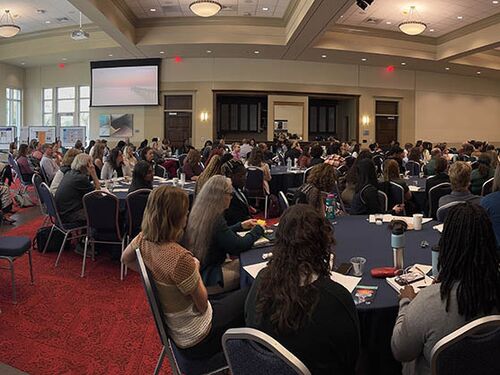To Improve Methods for Estimating the Life Cycle Greenhouse Gas Emissions of Low-Carbon Transportation Fuels, More Research and Focused Verification of Emissions Needed
News Release
By Megan Lowry
Last update October 19, 2022
WASHINGTON — Life cycle assessments (LCAs) of transportation fuels are valuable tools for measuring environmental impacts, but uncertainties remain in the models that are currently used, and further research should be conducted to strengthen their reliability, says a new report from the National Academies of Sciences, Engineering, and Medicine. The report recommends ways to improve models, increase reporting and transparency, perform targeted verification of emissions, and other avenues that will better inform policymaking for reducing greenhouse gas (GHG) emissions from transportation fuels.
LCAs are analysis techniques used to quantify environmental and social impacts. Increasingly, they have been applied in development of transportation fuel policy in order to estimate and help reduce GHG emissions from fuels such as electricity, biofuels, synthetic fuels, and hydrogen. Low-carbon transportation fuels ― “low carbon” referring to their global warming potential, not to the chemical composition of the fuel ― can emit carbon dioxide and other GHGs at the tailpipe, during production processes, and through wider supply-chain contributions. Determining the total net emissions of these fuels requires understanding how the fuels are made and how they affect markets. However, current LCAs differ notably in their implementation, data quality, modeling approaches, and key assumptions.
The report finds that there is no single LCA method capable of answering all questions related to the climate impacts of a transportation fuel, and that both attributional LCA (ALCA) and consequential LCA (CLCA) have important roles to play. CLCA ― which considers the consequences of a policy or decision, such as the market effects of production changes ― should be used to understand wide-ranging impacts of proposed changes on net GHG emissions. ALCA ― which assigns portions of observed environmental impacts from human activities to specific goods and services ― can be used to attribute emissions in well-defined supply chains and help identify opportunities to reduce carbon intensity throughout that supply chain. Hybrid methods that use a combination of process-based and economic input-output methodologies can also be useful in some circumstances. In all cases, modelers should provide transparency, justification, and sensitivity or robustness analysis for modeling choices.
“Life cycle assessments are vital tools for environmental public policy design and the development of low-carbon fuel standards, but there is no one-size-fit-all approach for practitioners ― it’s a matter of picking the right tool for the job,” said Valerie Thomas, Anderson-Interface Chair of Natural Systems at Georgia Institute of Technology, and chair of the committee that wrote the report. “Further research to advance these methods will help us better understand the drivers of greenhouse gas emissions and routinely integrate new, critical data into the policymaking process.”
Fuel-Specific Issues
The report contains a number of other findings and recommendations for assessing the emissions of specific transportation fuels and their feedstocks, including:
Hydrogen
More than 95 percent of hydrogen is made through processes involving natural gas (grey hydrogen), accounting for 6 percent of global natural gas production. A combination of industry monitoring and independent satellite and remote sensing technologies should be used to meet research needs on the climate impacts of natural gas production.
Emissions of methane and other gases from oil and gas facilities through flaring, leaking, and venting are poorly detected, measured, and monitored, representing a significant source of uncertainty in life cycle calculations. Additional data, reporting, and transparency are needed.
Hydrogen can also be made from electricity and water (green hydrogen). In the context of a low-carbon fuel standard (LCFS), certification would be needed to ensure that the electricity supplied from the grid for hydrogen production is renewable.
Aviation fuels
There are climate impacts from release of soot, water vapor, sulfates, and nitrogen oxides by aircraft. More research should be conducted to clarify these non-CO2 effects.
Additional research is needed to determine how alternative fuels and airframe combinations ― particularly electric battery technology and hydrogen ― may impact aircraft efficiency and overall emissions.
Biofuels
Study of land use changes from biofuels has been the topic of intense study over the last decade. Substantial uncertainties remain on key components of the models used to assess the impacts. More research into this area should be supported.
Biofuel production facilities typically produce additional products. The distinction between what qualifies as a co-product, byproduct, or waste can be unclear, creating uncertainty in LCA models.
Low-Carbon Fuel Standards
LCAs can serve a range of applications in developing and supporting a low-carbon fuel standard, the report says, including conducting regulatory impact assessments, establishing limits and eligibility for particular fuel feedstocks, and in carbon intensity scoring for fuel pathways.
The report makes a number of recommendations for applying LCAs in the implementation of an LCFS policy:
At a minimum, public policy design based on LCAs should ensure through regulatory impact assessment that proposed policies are likely to reduce net GHG emissions and increase net benefits to society.
The influence of negative emissions and biogenic carbon emissions ― which are derived from natural sources such as crops used for biofuels and forest feedstocks used for bioenergy ― should be accounted for in LCA estimates, and these merit more research to inform LCFSs.
To evaluate effective ways to collectively leverage the strengths of LCAs and verification methods in achieving LCFS objectives, more research is needed. The report recommends the creation of research programs designed to advance key theoretical, computational, and modeling needs.
Verifying Emissions
Directly measuring the emissions of all activities for an entire fuel pathway is impractical, the report says. However, knowledge gathered using LCA can guide the targeted allocation of resources toward verification of emissions sources, key data, and other effects that have the greatest impact for a given fuel. A verification strategy can also play a valuable role in monitoring changes over time and prompting action to help limit any negative unintended consequences of an LCFS.
Research and policy communities should develop frameworks and methodologies for the use of satellite data and remote sensing technologies to characterize land use change attributable to an LCFS. Additionally, an LCFS should consider inclusion of a certification protocol with verification that would be revisited periodically to adapt to new trends and technology. Using a verification strategy would serve additional objectives, such as confirming that individual supply chain actors are meeting standards, and monitoring and prompting action if there are negative unintended consequences.
The study, undertaken by the Committee on Current Methods for Life Cycle Analyses of Low-Carbon
Transportation Fuels in the United States, was sponsored by Breakthrough Energy.
The National Academies of Sciences, Engineering, and Medicine are private, nonprofit institutions that provide independent, objective analysis and advice to the nation to solve complex problems and inform public policy decisions related to science, technology, and medicine. They operate under an 1863 congressional charter to the National Academy of Sciences, signed by President Lincoln.
Contacts:
Megan Lowry, Media Relations Manager
Joshua Blatt, Media Relations Officer
Office of News and Public Information
202-334-2138; e-mail news@nas.edu
Featured Publication
Consensus
·2022
Transportation is the largest source of greenhouse gas emissions in the United States, with petroleum accounting for 90 percent of transportation fuels. Policymakers encounter a range of questions as they consider low-carbon fuel standards to reduce emissions, including total emissions released from...
View details


